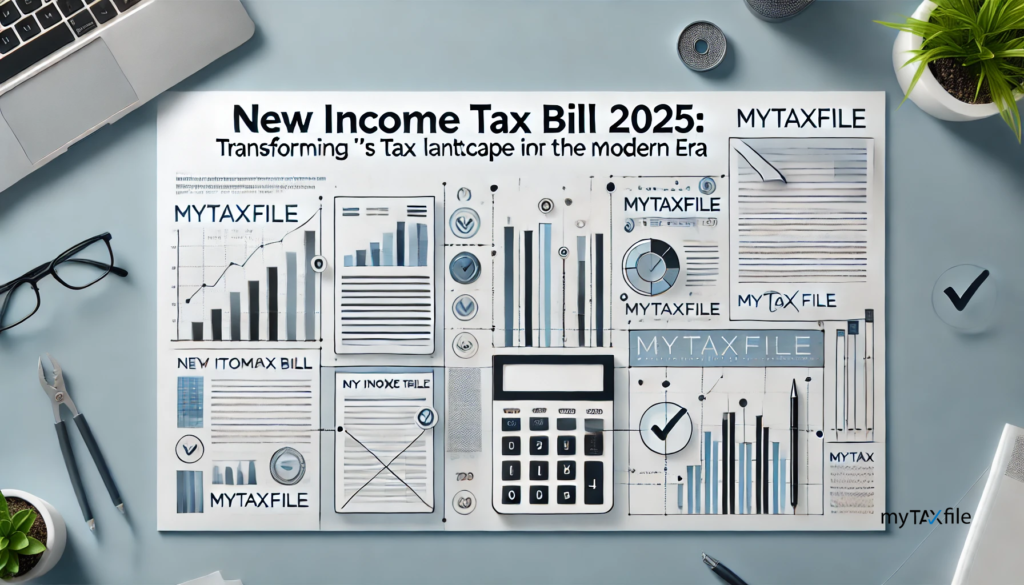In a decisive step toward overhauling one of the country’s oldest and most complex legislative frameworks, the Union Cabinet approved the New Income Tax Bill on February 7, 2025. This landmark reform is set to replace the Income Tax Act of 1961—a statute that has governed direct taxation for over six decades—with a modernized, simplified, and more transparent framework. As the bill prepares to be tabled in Parliament, experts, businesses, and taxpayers alike are keenly watching its potential to transform the way taxes are levied, collected, and enforced in India.
Overview of Key Changes in Budget 2025
For years, India’s tax regime has been criticized for its convoluted language, numerous amendments, and an ever-expanding body of sections and chapters. The current Income Tax Act, 1961, now comprising close to 298 sections across 23 chapters, has evolved into a labyrinthine document that poses challenges for both taxpayers and tax authorities. With amendments introduced in almost every Union Budget, the Act has become not only difficult to navigate but also increasingly prone to disputes and litigation.
The need for a comprehensive reform has grown more acute in today’s digital and globalized world. Modern economic realities demand a tax system that is both agile and comprehensible, one that minimizes ambiguity and aligns with international best practices. Recognizing these challenges, Finance Minister Nirmala Sitharaman announced a thorough review of the existing law in the previous budget session. The result is a bill that promises to cut redundant provisions, simplify legal language, and streamline compliance procedures—thus ensuring that the tax system is accessible to every Indian citizen.
Key Features of the New Income Tax Bill 2025
Key Features of the New Income Tax Bill 2025
One of the standout features of the New Income Tax Bill is its commitment to simplification. The bill aims to reduce the textual complexity of the existing law by eliminating obsolete clauses and cutting down on the number of sections by an estimated 25–30%. The revised statute is designed to be clear and concise, ensuring that taxpayers can easily understand their rights, obligations, and the procedures for tax compliance without the need for extensive legal or professional consultation.
Trust First, Scrutinize Later Approach
In a notable departure from traditional tax administration, the new bill incorporates a trust first, scrutinize later philosophy. This approach is expected to foster a more cooperative relationship between the tax authorities and taxpayers. By placing greater trust in the self-assessment system, the bill aims to reduce the frequency of intrusive audits and lengthy legal disputes. In practice, this means that the vast majority of tax returns—already hovering around 99% in self-assessment mode—will be processed with minimal manual intervention, thereby saving time and reducing administrative costs.
Trust First, Scrutinize Later Approach
The revised framework introduces a host of measures to simplify compliance. From easier filing procedures to the establishment of more effective dispute resolution mechanisms, the new bill is designed to minimize the friction points that currently plague the tax system. With clearer guidelines and reduced procedural ambiguities, the likelihood of litigation is expected to diminish substantially. This not only benefits individual taxpayers but also contributes to a more efficient and predictable business environment.
Trust First, Scrutinize Later Approach
While the new bill is a significant step toward simplifying the legal framework, it is important to note that it is designed to be revenue-neutral. That is, the core tax rates and slabs will remain largely unchanged, ensuring that the government’s revenue collection does not suffer. Instead, the emphasis is on improving clarity, reducing compliance costs, and eliminating redundant provisions—all without disrupting the overall fiscal structure. By doing so, the government aims to retain taxpayer confidence while making the tax system more responsive to contemporary needs.
Rationale Behind the Overhaul
Addressing Complexity and Legal Disputes
Over the decades, the Income Tax Act has become a victim of its own evolution. Continuous amendments, the insertion of temporary provisions, and the layering of exceptions have rendered the law an intricate web of legalese. This complexity has led to an increase in disputes between taxpayers and tax authorities, often culminating in lengthy litigation. By streamlining the language and cutting out obsolete clauses, the new bill seeks to minimize these disputes, thereby reducing the administrative burden on both the judiciary and tax authorities.
Modernizing in a Digital Age
The digital revolution has transformed every aspect of economic activity, including tax administration. With the widespread adoption of digital filing systems and the integration of various data sources—from employers and banks to property transactions—the need for a modernized tax framework is more pressing than ever. The New Income Tax Bill is being designed with these technological advancements in mind, incorporating provisions that leverage digital tools to simplify filing, enhance transparency, and improve data accuracy. In doing so, it aligns India’s tax system with global best practices and reinforces the nation’s commitment to embracing digital governance.
Modernizing in a Digital Age
A clear and streamlined tax system is not only beneficial for individual taxpayers but also crucial for attracting foreign investment. Complex and opaque tax laws can deter potential investors, who may be wary of unexpected legal challenges or hidden liabilities. By adopting a simplified tax code, India is taking a significant step toward enhancing its ease of doing business. This reform is expected to bolster investor confidence, ultimately contributing to economic growth and a more robust domestic market.
Impact on Taxpayers and the Business Community
Benefits for the Middle Class
One of the central objectives of the new bill is to alleviate the compliance burden on individual taxpayers, particularly those in the middle-income bracket. For millions of salaried professionals, the simplified tax code will mean fewer headaches during tax season, reduced reliance on costly tax consultants, and a clearer understanding of tax liabilities. The trust first approach also promises to expedite the refund process, allowing middle-class households to access their funds more quickly and reinvest them in the economy.
Advantages for Businesses
For businesses, especially small and medium enterprises (SMEs), the simplified tax regime represents a welcome relief. The reduction in procedural complexities and the elimination of redundant provisions can lead to significant savings in both time and resources. With clearer rules and a more predictable regulatory environment, companies can plan their finances with greater certainty. Moreover, the alignment of India’s tax framework with international standards is likely to boost foreign direct investment (FDI), as global investors find the new system more transparent and easier to navigate.
Broader Economic Implications
On a macroeconomic level, the New Income Tax Bill is poised to deliver a range of benefits that extend well beyond the realm of compliance. By reducing legal disputes and administrative inefficiencies, the government can redirect resources toward developmental initiatives. Additionally, enhanced taxpayer confidence and improved ease of doing business are expected to stimulate overall economic activity, contributing to higher consumption, increased savings, and more robust private investment.
Expert Commentary and Industry Reactions
Industry leaders and financial experts have expressed cautious optimism about the new reforms. According to top economists, the streamlined tax code is expected to reduce litigation significantly and improve overall compliance rates. Corporate leaders have also welcomed the move, noting that a simplified tax framework can act as a catalyst for increased investment and growth. The consensus among experts is that, while challenges remain in the transition phase, the long-term benefits of the reform are likely to outweigh the initial disruptions.
Some critics, however, have raised concerns about potential loopholes that might emerge in the simplified framework. They caution that while reducing complexity is a laudable goal, it is essential to ensure that the new provisions are robust enough to prevent tax evasion and maintain fiscal discipline. In response, government officials have stressed that the bill has been designed to be both clear and comprehensive, with ample safeguards to prevent abuse.
The Legislative Journey Ahead
Parliamentary Scrutiny and Public Consultation
After the Cabinet’s approval, the next major step for the New Income Tax Bill is its presentation in the Lok Sabha. Once tabled, the bill will be referred to the Standing Committee on Finance, where it will undergo detailed scrutiny. During this phase, stakeholders—including tax experts, business leaders, and ordinary citizens—will have the opportunity to provide feedback and suggest amendments. This consultative process is expected to further refine the bill and ensure that it meets the diverse needs of India’s taxpaying community.
Implementation Timeline
Although the exact timeline for the bill’s implementation has yet to be confirmed, initial indications suggest that it could come into effect for the financial year 2025–26 or early 2026. The phased rollout is designed to give taxpayers and businesses sufficient time to adjust to the new system. In the interim, the government is expected to conduct a series of outreach programs and workshops to educate the public about the changes and facilitate a smooth transition.
Looking Ahead A New Era in Indian Taxation
The New Income Tax Bill 2025 represents more than just a legislative update—it is a visionary reform that seeks to recalibrate India’s entire approach to taxation. By replacing the archaic Income Tax Act, 1961, with a streamlined, transparent, and technology-friendly framework, the government is laying the groundwork for a more efficient and investor-friendly economy. This transformation is critical not only for ensuring compliance and reducing disputes but also for fostering an environment where economic growth and innovation can thrive.
In the long run, the success of the new tax code will be measured by its ability to simplify the lives of millions of taxpayers, boost investor confidence, and support India’s ambitious growth targets. As the bill moves through Parliament and eventually becomes law, all eyes will be on its implementation and the tangible benefits it brings to the economy. For now, the approval of the New Income Tax Bill stands as a historic milestone in India’s journey toward a more modern, equitable, and effective tax system.
Conclusion
The approval of the New Income Tax Bill 2025 by the Union Cabinet marks a pivotal moment in the evolution of India’s fiscal policy. Designed to replace a decades-old statute with a more concise, clear, and digitally attuned framework, this reform holds the promise of reducing compliance burdens, mitigating legal disputes, and aligning the nation’s tax system with global standards. As the bill prepares to be debated and refined in Parliament, its eventual implementation could well herald a new era in Indian taxation—one where transparency, simplicity, and efficiency pave the way for sustained economic growth and a more empowered taxpayer base.
With a focus on both individual and corporate taxpayers, the reform is poised to enhance the ease of doing business, stimulate private investment, and boost the confidence of millions across the nation. By setting aside outdated provisions and embracing a trust first approach, the New Income Tax Bill is not only a legislative reform—it is a bold step toward a future where India’s tax system is as dynamic and forward-looking as the country itself.
As we move into this exciting new chapter, it is clear that the New Income Tax Bill 2025 is more than just a legal document; it is a comprehensive roadmap for transforming India’s fiscal landscape, ensuring that the nation is well-equipped to meet the challenges and opportunities of the 21st century.












